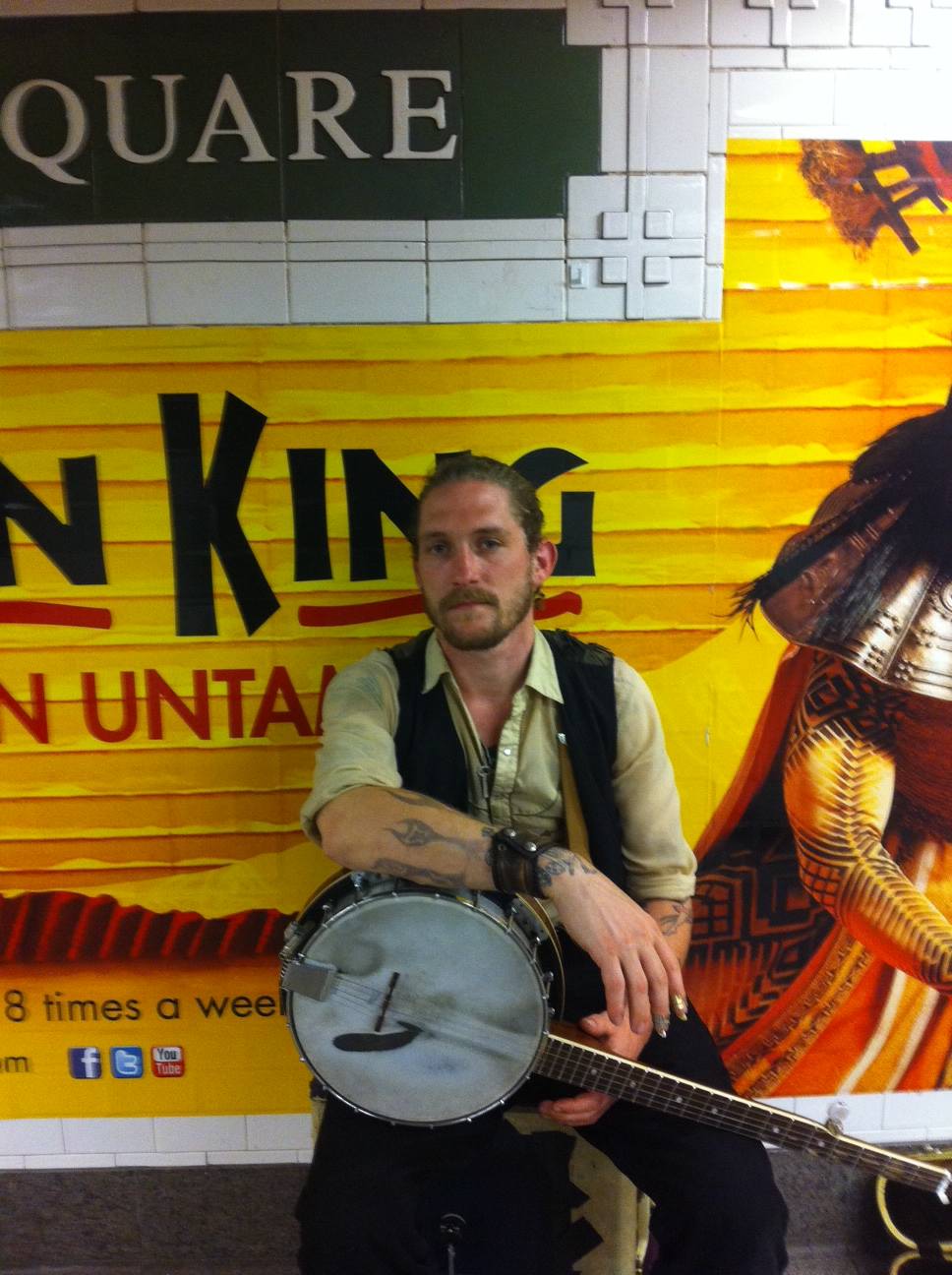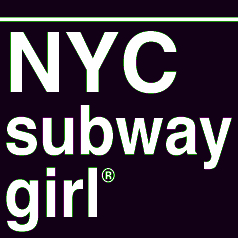Guest Blogger, Journalist Katherine Ulrich contacted me to do a story on buskers, we had a great chat on the phone, here's her story
Her voice echoes beautifully, not competing with the din of the school children chattering and the homeless people shouting and the clicks of turnstiles and clattering of shifting train tracks, but complementing it. The harried commuters rush by to get to Penn Station to take the LIRR, the hipsters head to Brooklyn on the NQR, and mothers pushing strollers rush to catch the uptown 6, but for just a moment, people in the Union Square subway station are brought together by that age-old unifier: music. And in that moment, there is a community in the subway, one of the least friendly places in New York, all because of Natalie Gelman,
subway chanteuse.
“You have to be prepared for anything. You don’t know who you will connect with, who will open up their heart to your music,” says Gelman. “You’re throwing people out of their normal daily commute…you’re giving them something more substantial to think about than ‘what’s for dinner?’”
As a native New Yorker born to musician parents, Gelman began performing at open mic nights in clubs like CBGB and The Bitter End when she was only 17, but it was the subway that really influenced her music style, allowing her to sing for a wider variety of listeners.
“In a perfect world, the term alternative would still mean what it used to in the ‘90’s,” she says of her genre. “But it [my music] straddles the line between the quieter and more intimate stuff, but also powerful and rocking. It’s alterna-rock punk-pop.”
After a few attempts at “busking” (as street performing is called) nine years ago, a friend encouraged Natalie to start playing guitar and singing in the subway for money. It was here she realized the influence not only she can have as a performer, but subway performing can have on her. As a member of Music Under New York, or MUNY, Natalie now has a schedule of where to perform, her MUNY permit affording her protection from harassment by police officers for starting crowds.
MUNY was initiated by the Mass Transit Authority in 1987 to promote the music culture by “presenting quality music to the commuting public” according to its website. With over 100 musical acts performing music of various genres, from folk to opera to blues, the popular program is positively changing our commutes. Just ask Cathy Grier, or NYC Subway Girl, a MUNY member since 1999.
“The message of MUNY is just ‘good sounds’,” says Grier. “Whether you like the genre or not, any music is definitely more pleasing than door alarms and metal scratching and grating train brakes. The program is to create and provide diversity, and as a performer, your lofty ideals of life, career and success are turned around. It’s a humbling experience.”
Despite having performed her “folked-up blues” music everywhere from bars in Key West, Florida, to across Germany as a member of a touring French girl band, Grier is most inspired by subway performing, favoring three spots within Grand Central (each location has different acoustics and atmosphere, so she “changes rhythms and tempos accordingly”). She is even recording an album of songs about the subway in the subway.
“Music becomes different in the subway. I’m influenced by what’s around me,” says Grier. “I’m not just standing there-it’s different every time. You pick up on the energy around you.”
Tom Swafford, a classically trained composer and arranger with a PhD in composing from UC Berkeley, also recorded an album about performing in the subway called 7th Avenue. At first, he did not even realize he was improvising the same songs repeatedly, but when he did, he decided to make an album.
“An album would literally give me a record of what I’ve been doing with my life lately,” says Swafford. “I played so often at the 7th Avenue subway station in Brooklyn, people who knew my music appreciated it.”
Although Gelman, Grier and Swafford have had very different performance experiences, all describe the subway as one of their favorite venues due to the inherent spontaneity of busking underground.
“It took me awhile to understand the concept of performing in the subway. Live performance is a type of art in itself,” says Cathy. “The immediate reaction, or no reaction. Either way, you’re part of the fabric. It’s a pass-through because people are not coming to hear you [like at a concert]. This is a way to just make people happy.”
This is a sentiment shared by all subway musicians; regardless of what type of music they are playing, it is about how that music makes the listeners feel that matters. Across the board, the goal is to put a smile on the face of just one person.
It is not a requirement to be a MUNY member to perform in the subway, however. Plenty of musicians perform without a permit due to a variety of reasons, including the competitiveness of becoming a MUNY member.
Morgan O'Kane taking a break in Union Square subway station

“The nice part about playing on the streets and in the subway is there are no real rules,” says O’Kane. “The city just wants a piece of everyone, and I’m doing my part to give it with my music.”
In other words, he does not need MUNY because it’s the freedom that comes with performing that he enjoys. O’Kane does not have another job besides busking around Union Square and Lorimer stations, but does make “a decent living.”
This is what makes playing in the New York City subway the ultimate performance: you do not need a permit, contract, producer, album, or big name. You need your voice, perhaps a musical instrument, and that is it. Commuters can come and go, but that experience of performing will last forever. You were there and sang a song, and even if only with a smile, you changed someone.
“Subway performance is just about the music,” says Swafford. “It’s about the expression of the players, what we are communicating to the commuters. It’s not about flashy labels and showing off. It’s about expressing a genuine love for music, plain and simple.”
interesting notes from Katherine leading up to the piece:
May 2, 2011
Hi, all. I hope we spend some time on Tuesday talking about the coverage of the reported death of bin Laden. Interesting, indeed.
As for my project, this week just made me realize how many incredibly talented musicians perform in the subway. I recently made friends with a man who plays the didgeridoo, a group of male break dancers, and a really strange man that sings while he makes a puppet move to the beat (!?). I need to figure out who my
“star” stars are though for the piece – I need better quotes. So far, I don’t have any stand-out interviews, but I do have a lot of background information on what subway performing is like. It’s coming together, but slowly. I want to get some high quality videos to include in the final blog post (I do have one so far, but the acoustics are a bit off). Lastly, I put a call into two of the Arts for Transit authorized (and publicized) musician groups. I think it will all come together.
APRIL 25, 2011
Ok I don’t know why, but the “links” feature is not working for me right now. I keep trying to link to all of the various websites I have used for my research so far, but it won’t let me. Basically, I got the idea to write about the subway performance artists (most of whom are musicians) through a NY Magazine article from February 27. Then, I read various online articles about the musicians, including the March 21 blog post from the NY Times (about the changing face of subway musicians), a April 19 NY Daily News article about Lyle Divinksy (a singer/guitarist), and additional NY Magazine articles about different performers (one about Susan Cagle, who has now sold 30,000 copies of her album because of her subway performing). Additionally, I researched the various laws associated with performing, especially in regard to MTA – Arts for Transit and MUNY. In the past week I have checked out musicians at Lorimer, Union Square, Battery Park and Bed-Stuy stations.
In my research, I have noticed a couple of (random) things that might pose problems/become more interesting. A) It is going to be hard to find new ways of saying “performer” throughout the piece without being contrived. B) Many of the laws contradict one another, or at least the resultant discrepancies between law enforcement and musicians contradict the actual laws. C) People actually can and do get arrested…for singing too loud? Shameful. D) Some people have actually garnered moderate fame from this. E) MUNY is actually very selective, but also a permit is NOT necessary to perform down below the city.
So, as for my angle: I know we discussed the MUNY tryouts and such, but I’m trying a different route. I, of course, am intrigued by the legality of the whole thing. I get a kick out of interviewing police officers (“I’m sorry, ma’am, but I can not give you an answer at this time”) and I want to focus not on the shiny cool performers that cover freaking Oasis/The Beatles, but the homeless guys that just belt it for kicks. So basically I’m going to figure out the intricacies of the nitty gritty underside of performing underground
